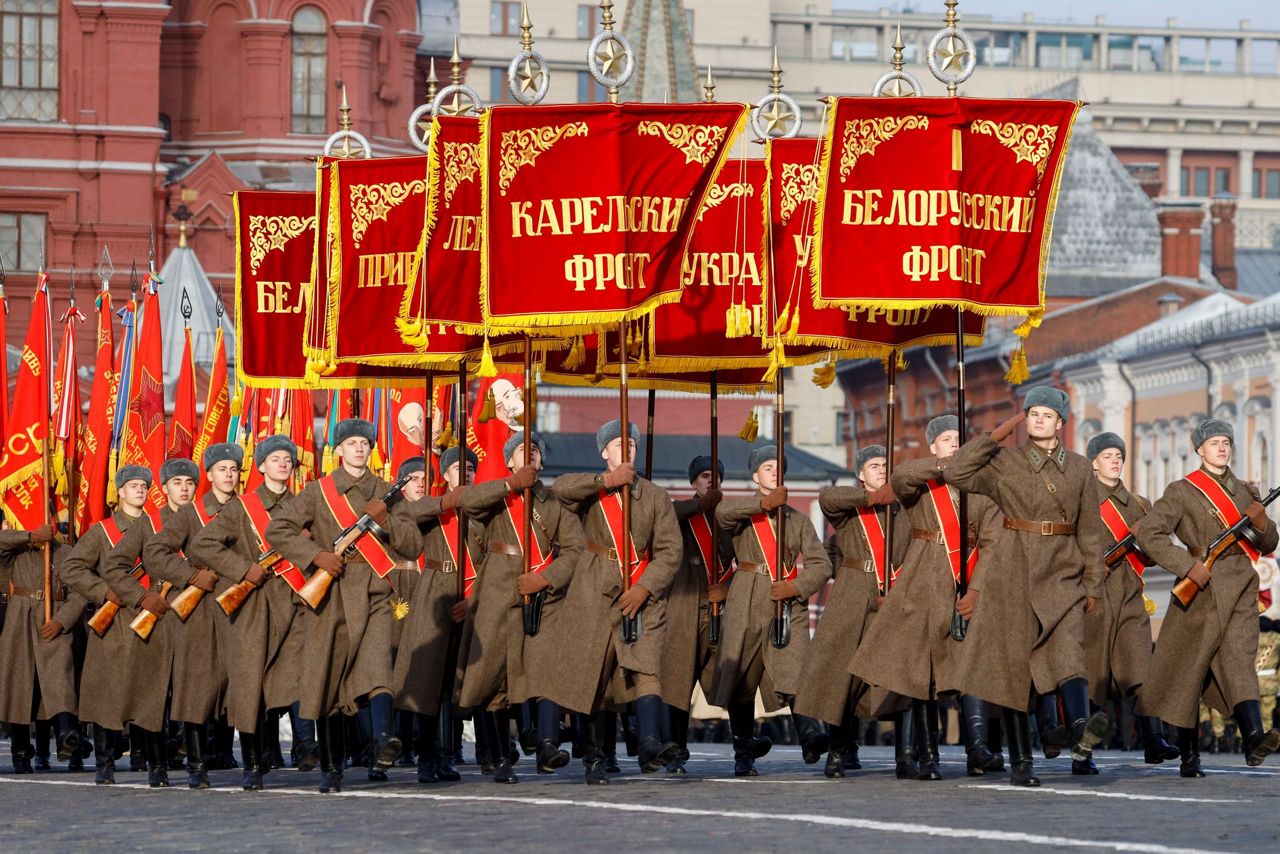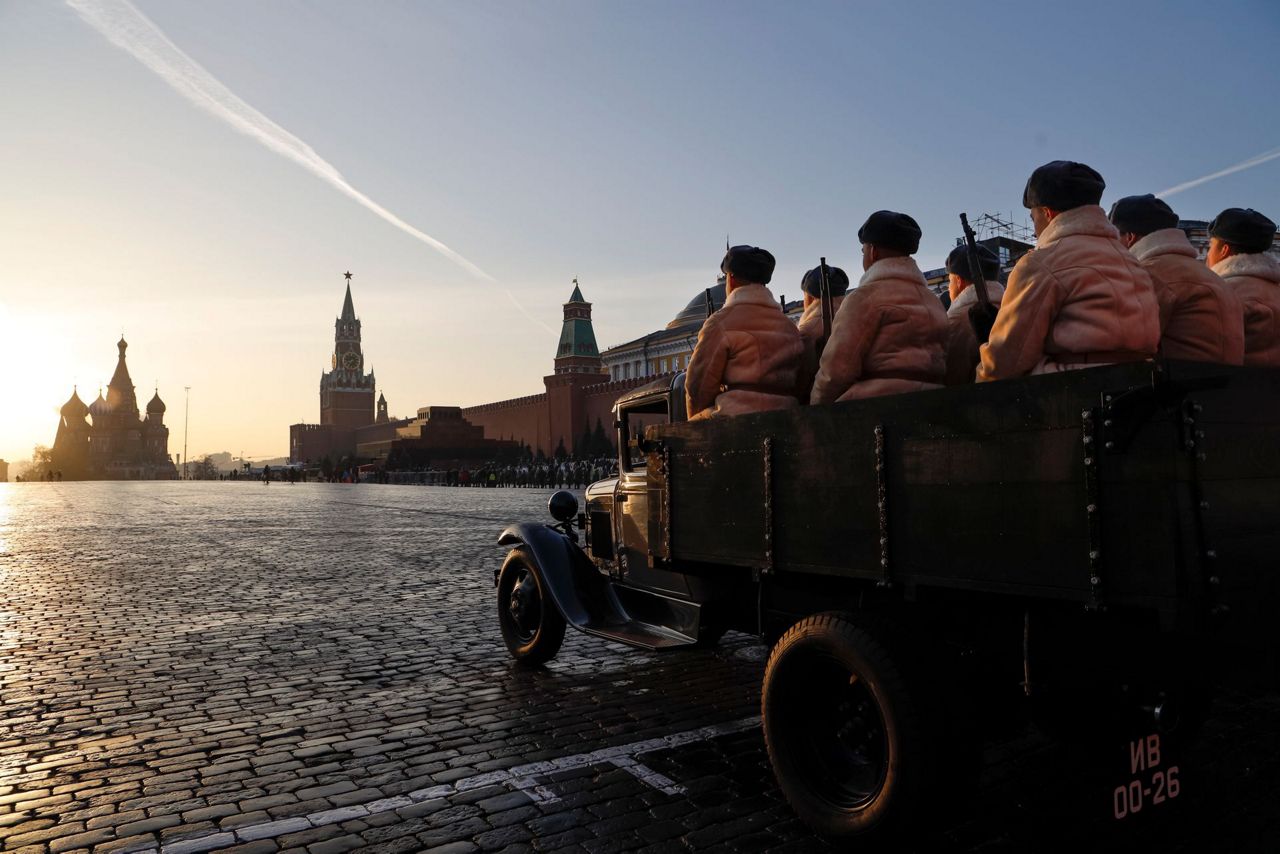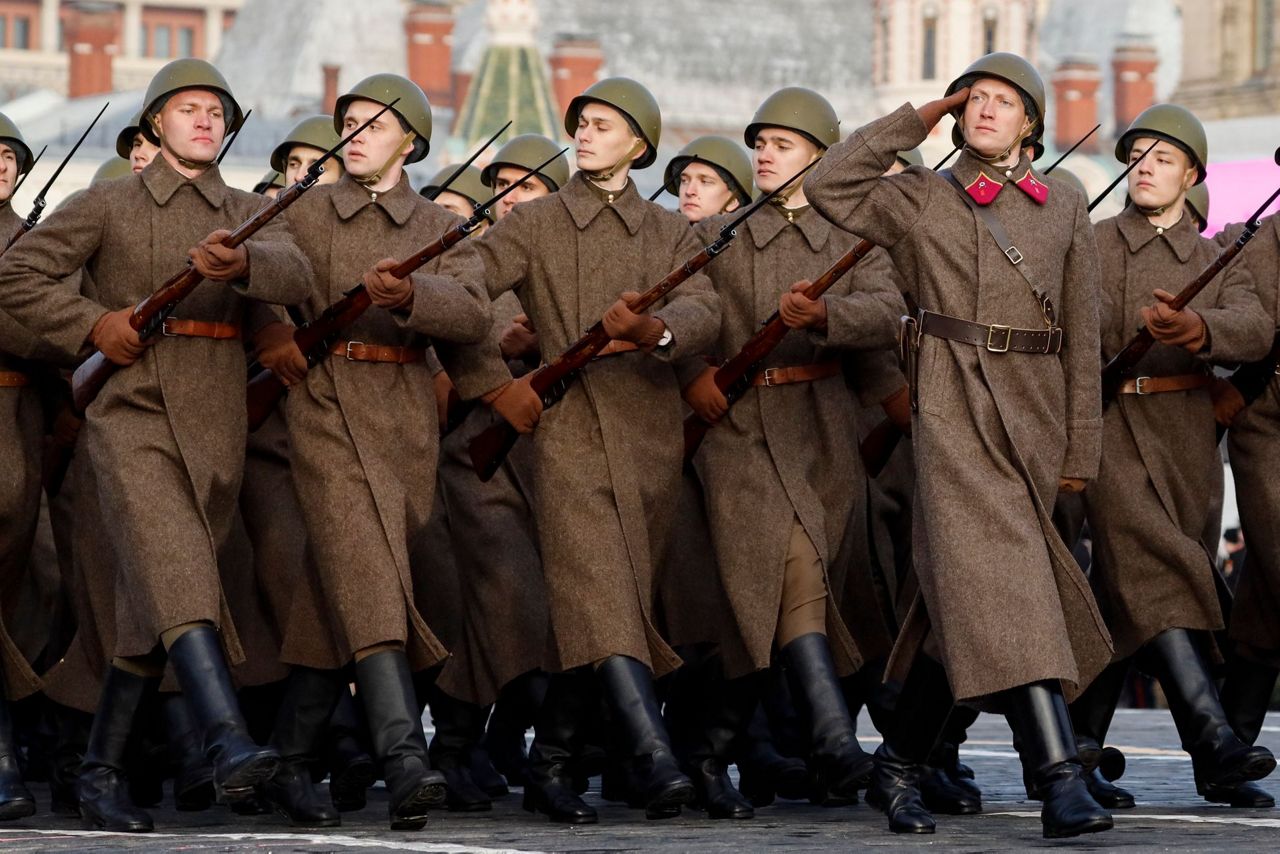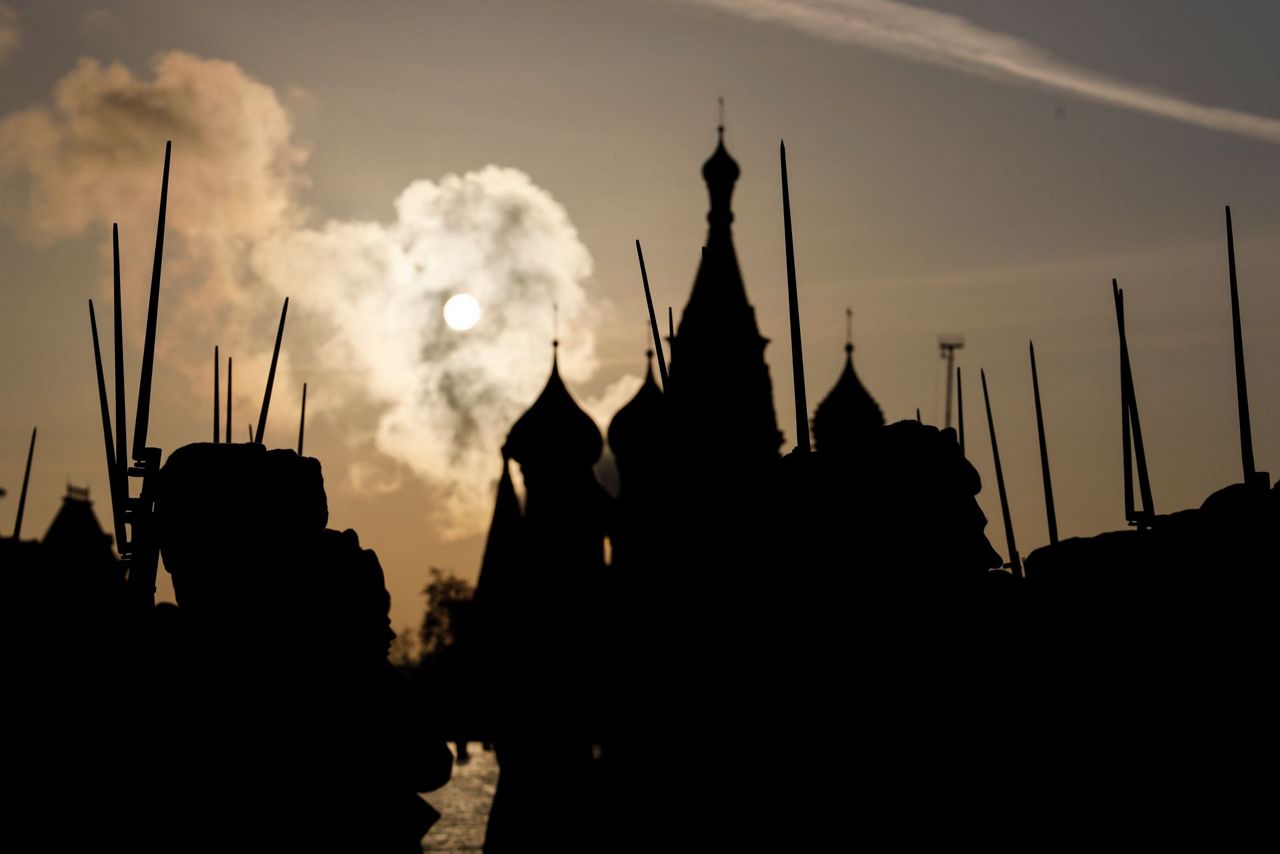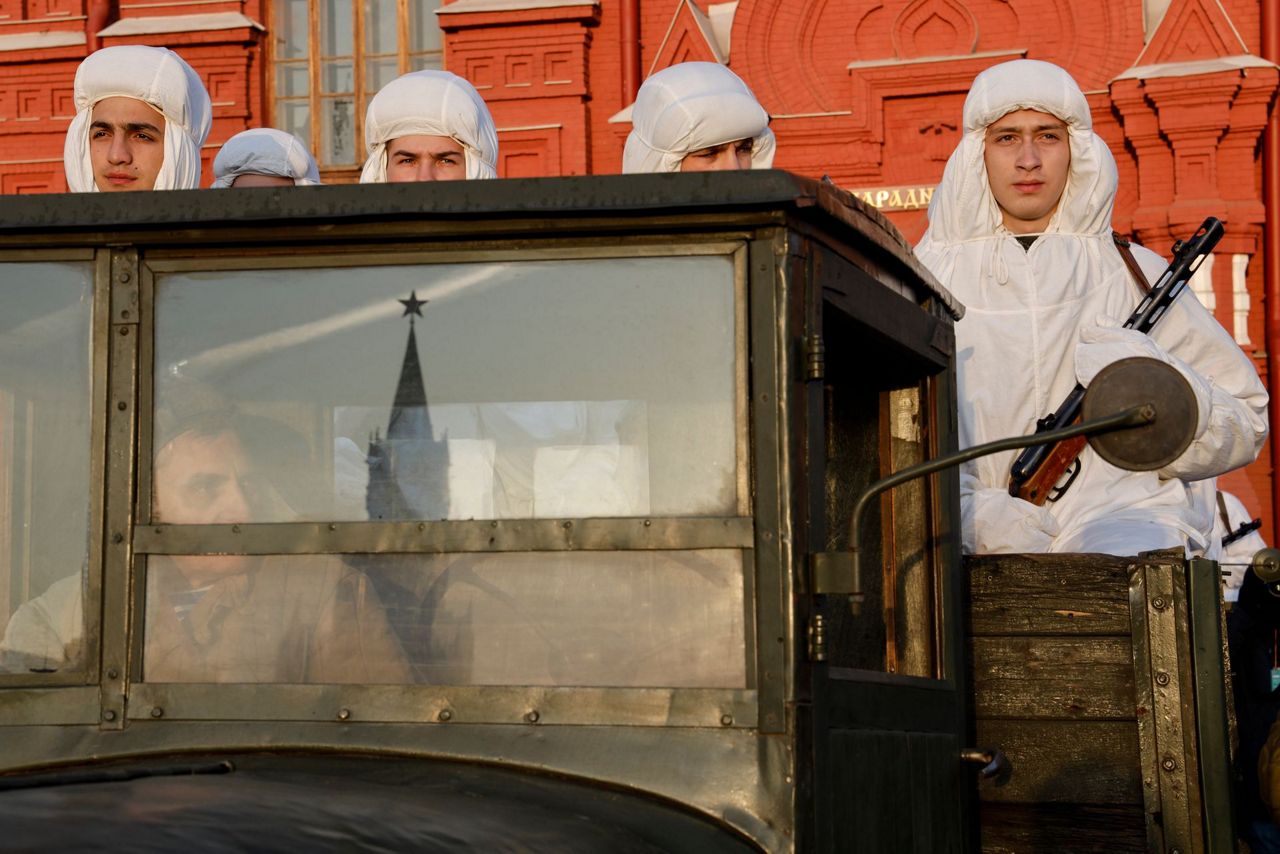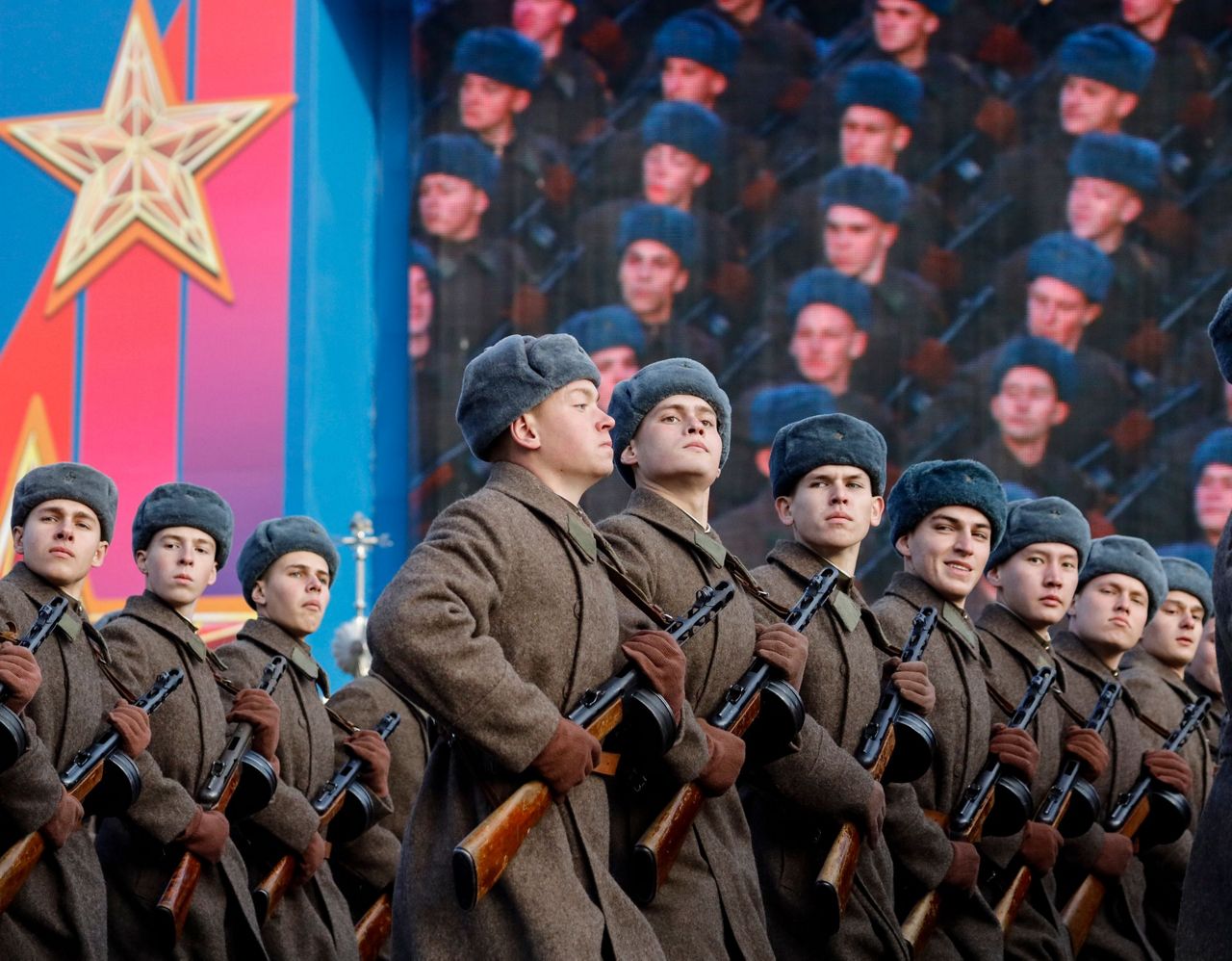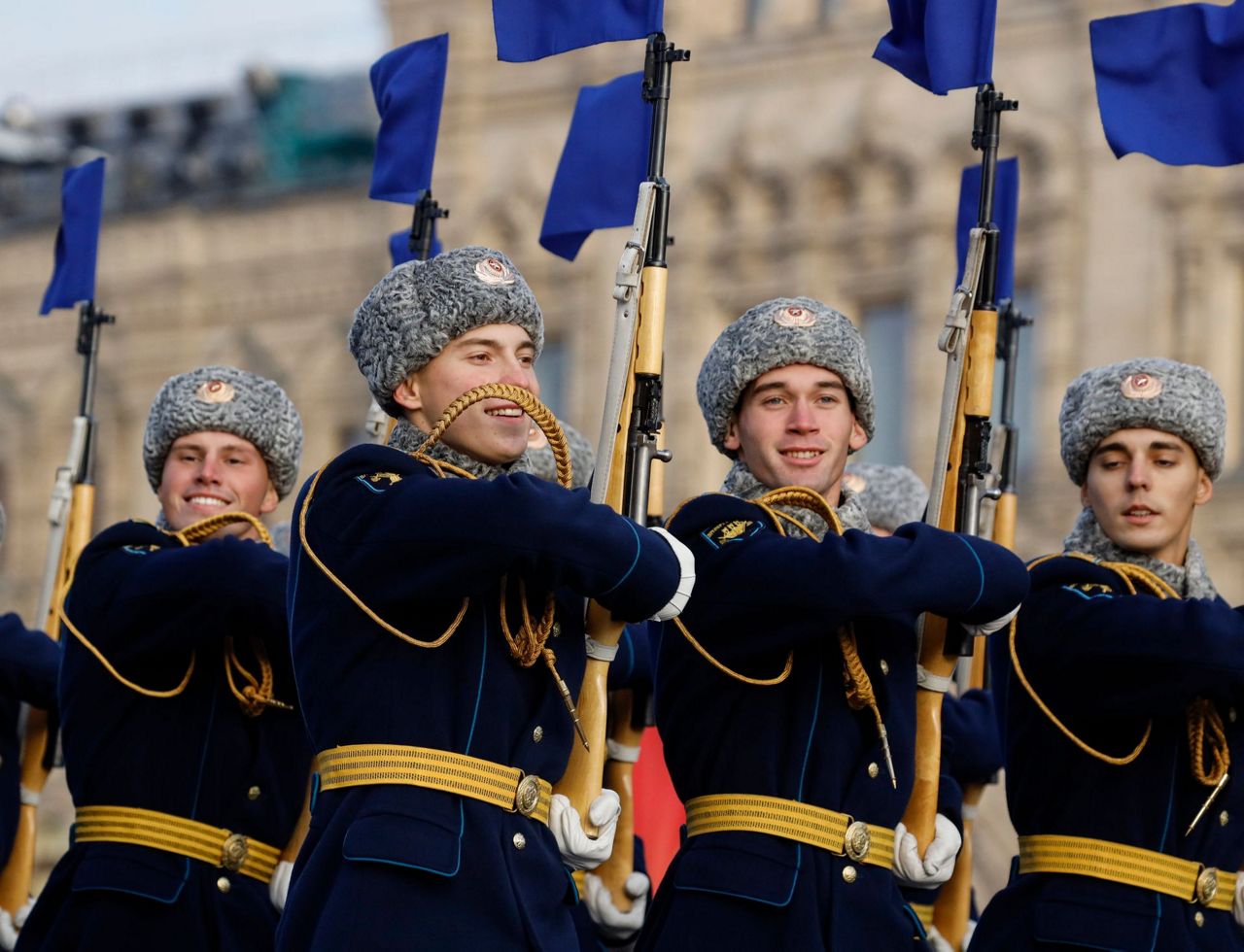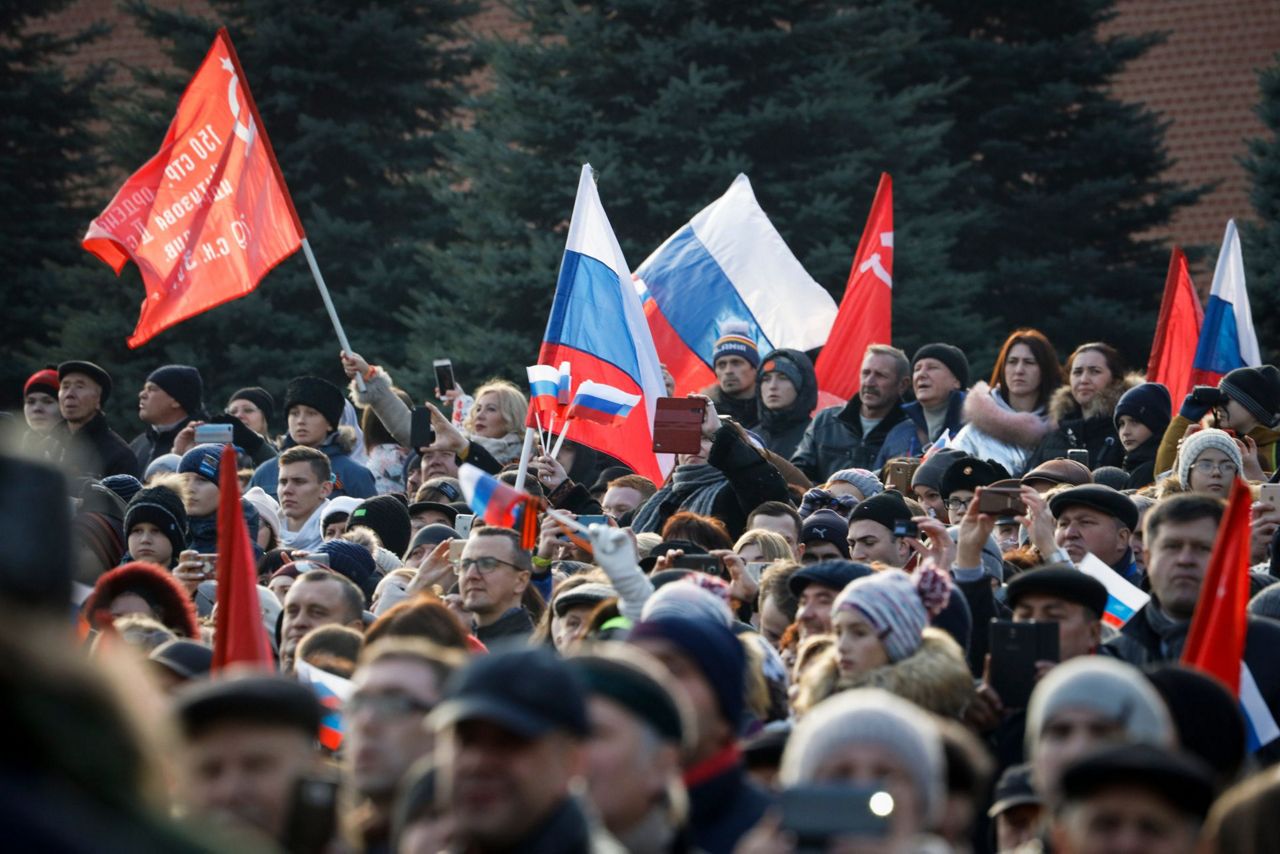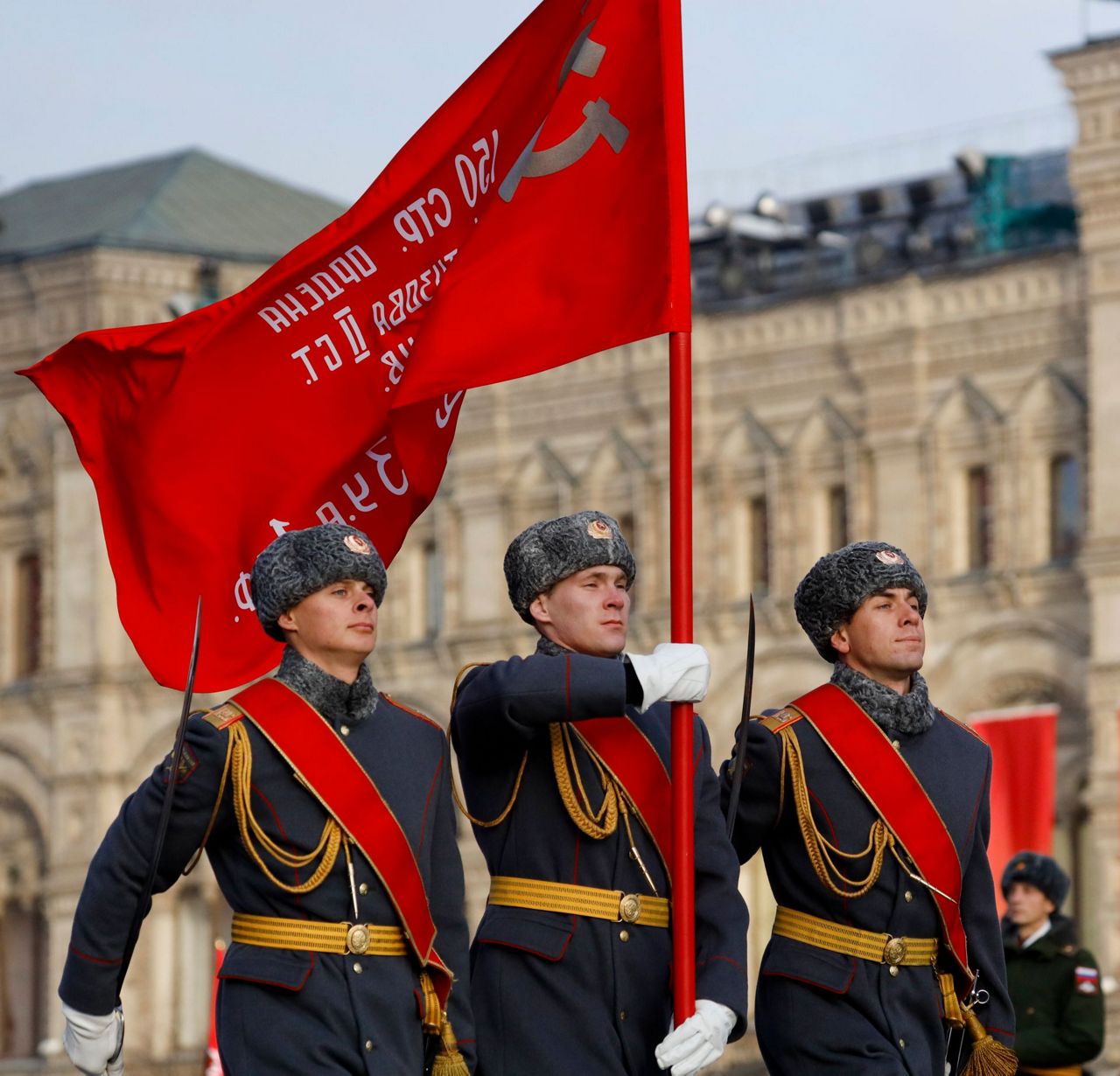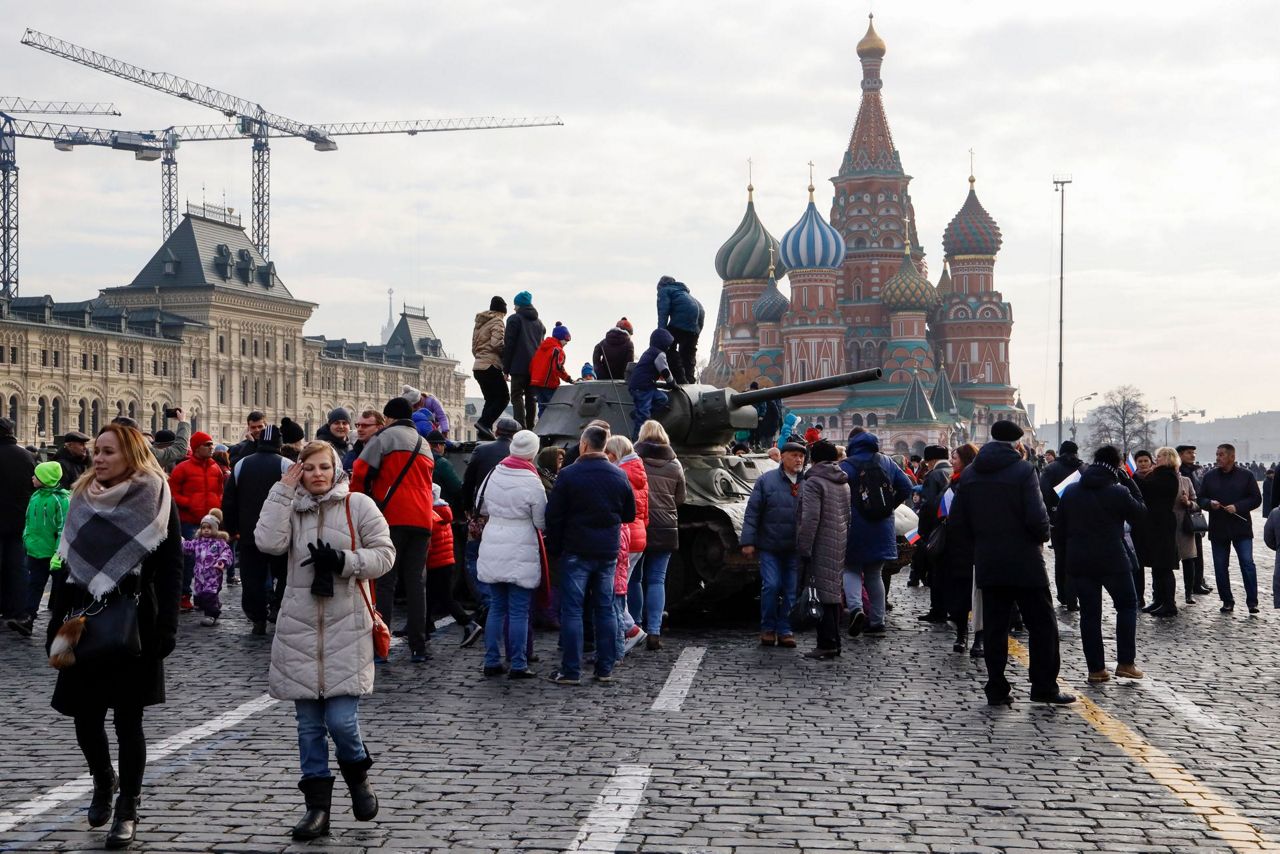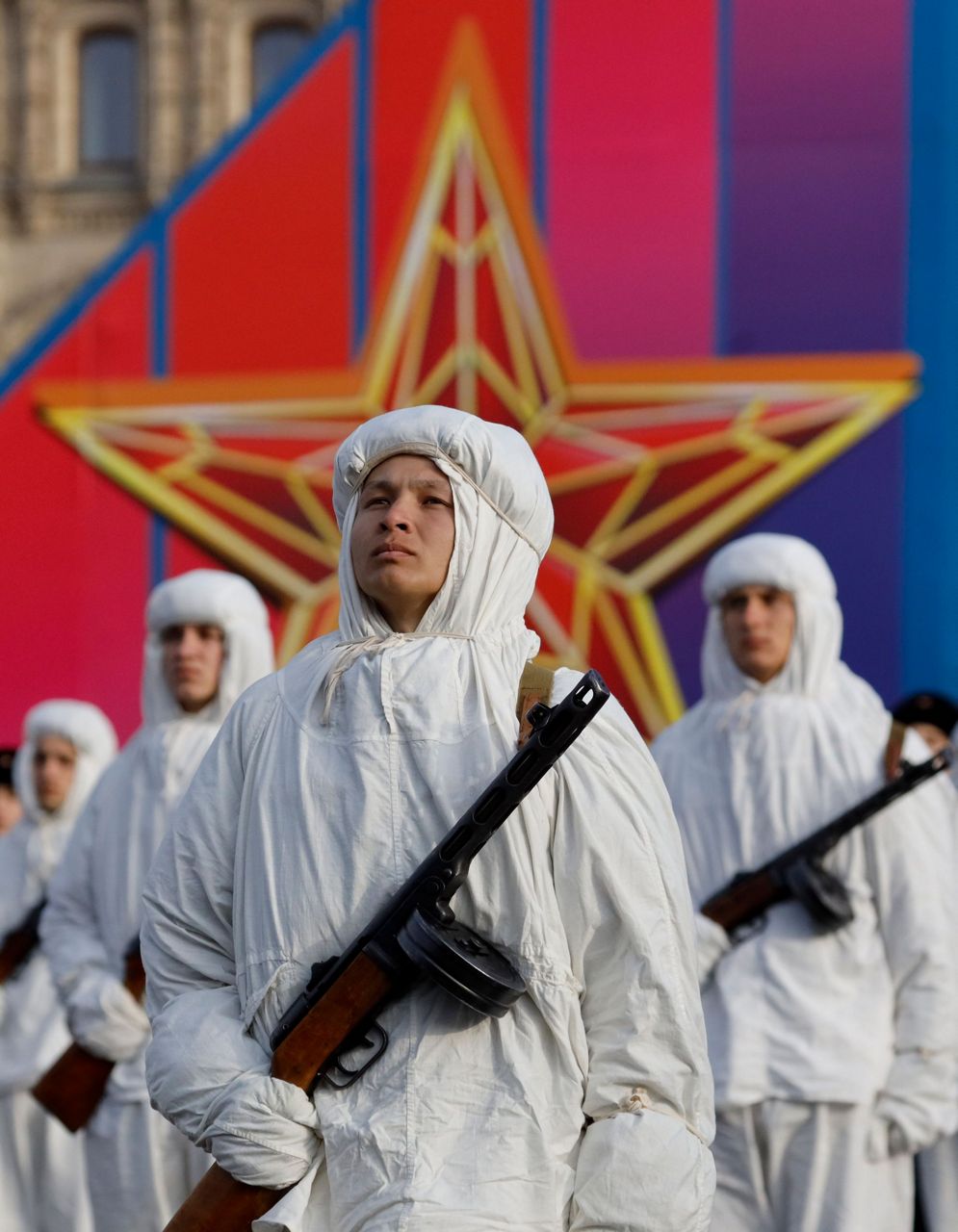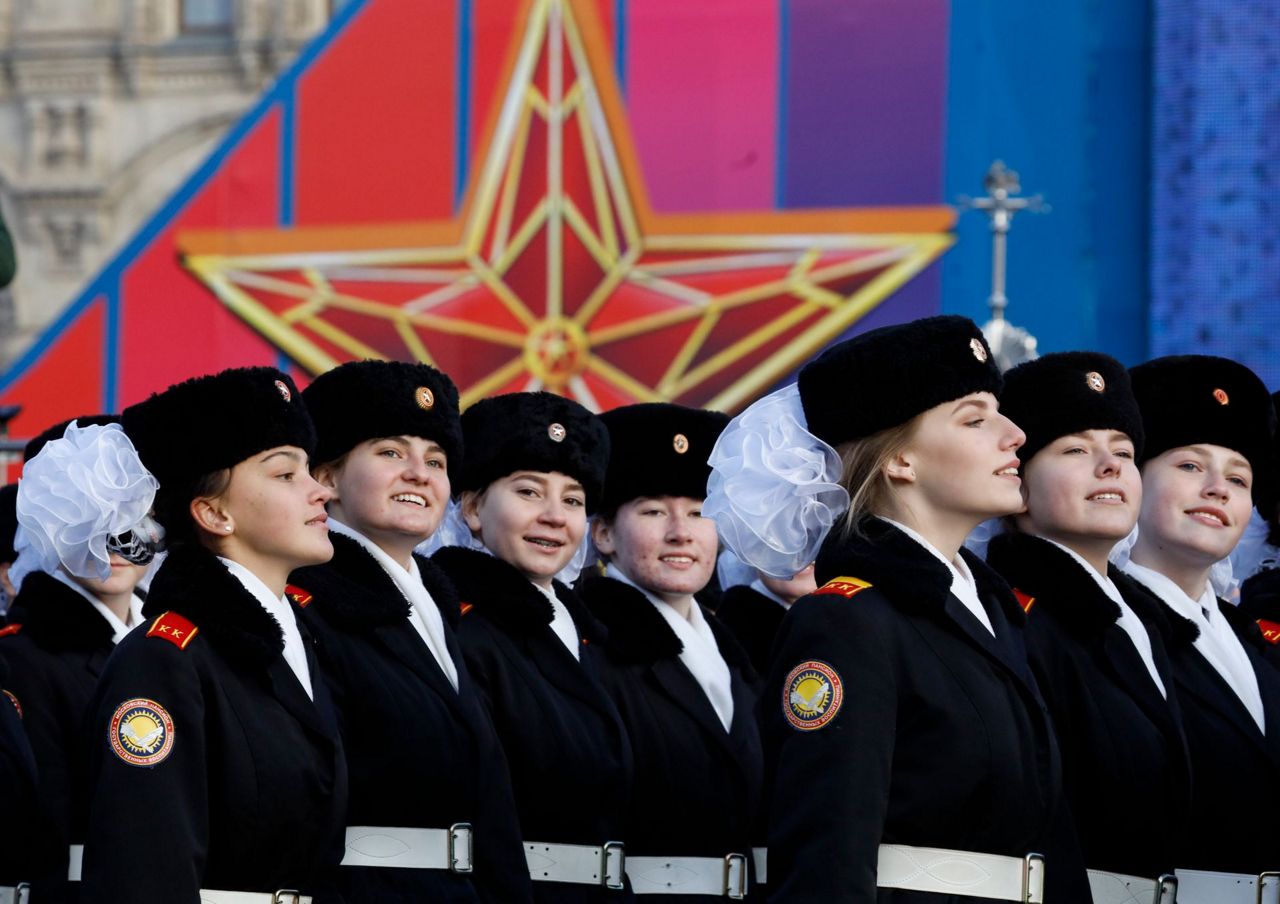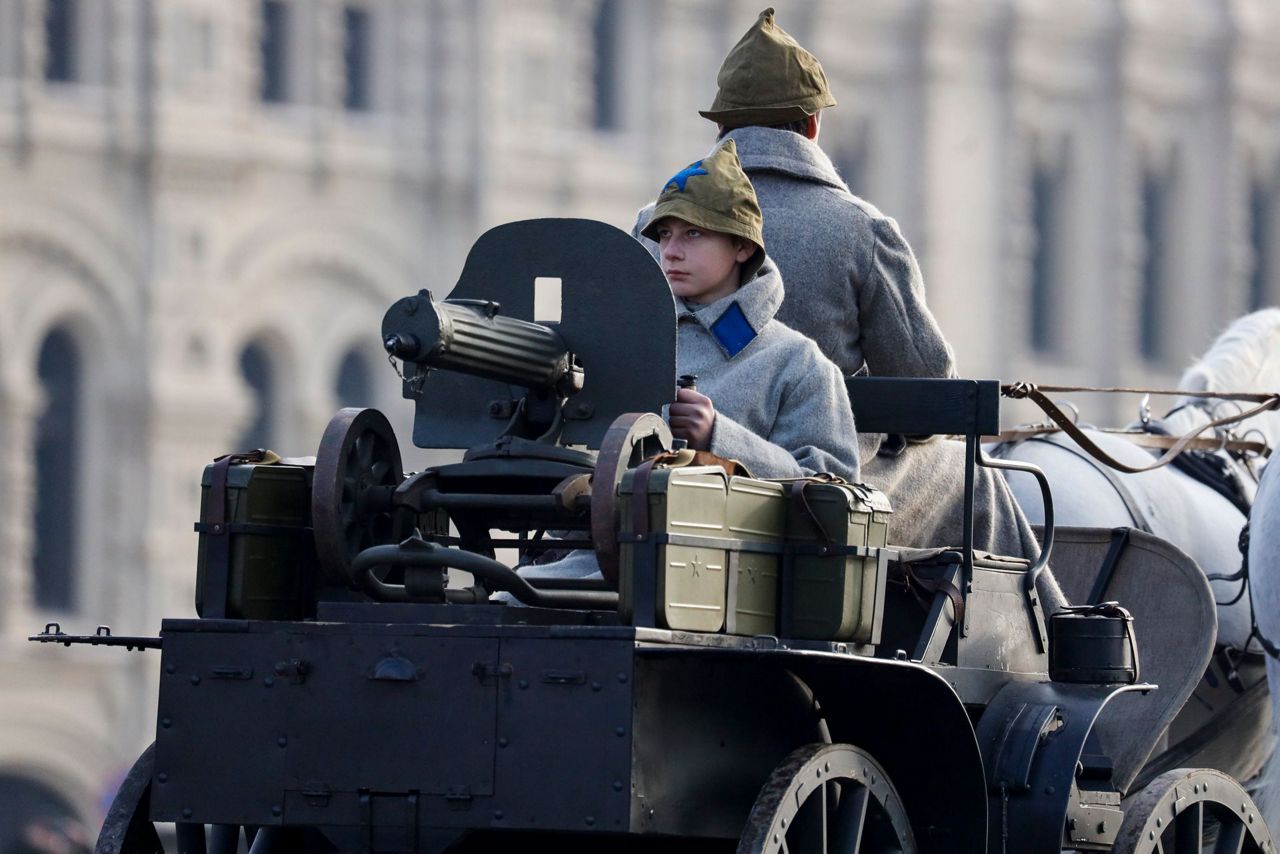MOSCOW (AP) — Thousands of troops in World War II uniform marched across Moscow's Red Square on Wednesday in a re-enactment of a historic wartime parade.
On Nov. 7, 1941, Red Army soldiers marched directly to the front line during the Battle of Moscow to repel the invading Nazi forces closing in on the Soviet capital.
Moscow Mayor Sergei Sobyanin said the 1941 parade was "a symbol of courage and faith," paving way for "the first difficult step toward victory over the Nazis."
The Nazis closed in on Moscow in early October 1941 after quickly seizing huge chunks of Soviet territory and inflicting huge losses to the Red Army after invading the Soviet Union on June 22, 1941. In some sectors at the front, Nazi troops came as close as 30 kilometers (20 miles) to the Russian capital.
But the Nazi offensive lost its momentum in mid-October as it faced adverse weather and logistics challenges, allowing the Soviet command to bring in reinforcements and strengthen the city's defenses.
As the fate of Moscow was still hanging in the balance, Soviet leader Josef Stalin ordered the Nov. 7 parade to boost the troops' morale. The parade has acquired a major symbolic significance, becoming a show of Soviet determination and resolve.
The Battle of Moscow marked the first time since the start of the Nazi invasion of the Soviet Union when the Red Army managed to stop the advancing Nazi forces and drive them back. It was the first major Nazi defeat since the start of World War II.
Wednesday's re-enactment featured about 5,000 troops in period uniforms, vintage T-34 tanks and other WW II weapons.
During Soviet times, annual military parades were held on Nov. 7 to commemorate the 1917 Bolshevik Revolution. The holiday was abolished in 2005, but many older Russians still celebrate it.
Copyright 2018 The Associated Press. All rights reserved. This material may not be published, broadcast, rewritten or redistributed.



